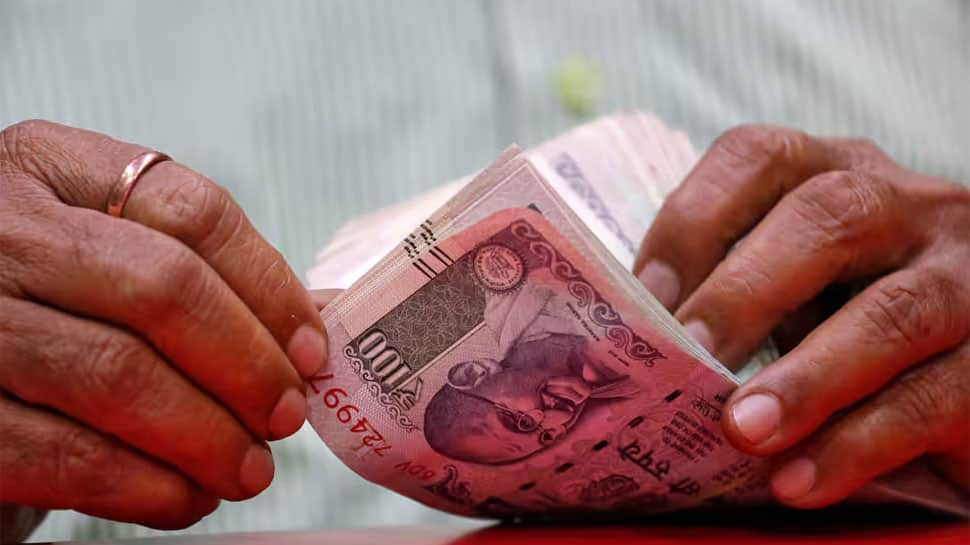Business
Trump, Putin reach 'understanding' on ending war in Ukraine; no details revealed

Business
Meesho IPO Opens Tomorrow: From Price Band To Lot Size And More, Here Are10 Key Things To Know

Meesho, India’s leading e-commerce platform, is slated to launch its highly anticipated IPO from 3 to 5 December 2025. The e-commerce company has set the Meesho IPO price band at Rs 105 to Rs 111 per equity share. Meesho is today the leading e-commerce player in India in terms of order volume as well as one of the country’s most popular shopping apps.
Here’s a list of important Meesho IPO details to help you make an informed investment decision.
1. IPO date
The e-commerce firm’s public issue will be open for subscription from December 3 to December 5, 2025.
2. IPO price
The Bengaluru-based company has set a price band of Rs 105 to Rs 111 per share.
3. IPO size
The e-commerce company plans to raise Rs 5,421 crore. Out of this amount Rs 4,250 crore is intended through the issuance of fresh shares and the remaining Rs 1,171.20 crore is reserved for the OFS route. At the high end, Meesho’s valuation stands at Rs 50,096 crore.
4. IPO lot size
A bidder will be able to apply for the upcoming IPO in lots with each lot of the book build issue comprising 135 company shares.
5. Minimum investment
A retail investor would require a minimum investment of Rs 14,985 to bid for at least one lot and in multiples thereafter.
6. IPO allotment date
The allotment of shares is expected to be finalised on December 8, 2025.
7. Allottees’ share
The successful allottees will receive the company’s shares in their respective demat accounts on December 9, 2025.
8. IPO listing date
The public issue is proposed for listing on the BSE and the NSE with the most likely date for share listing on 10 December 2025.
9. IPO registrar
KFin Technologies is the official registrar of the fresh capital-cum offer for sale.
10. IPO lead managers
Kotak Mahindra Capital, JP Morgan India, Morgan Stanley India, Axis Capital and Citigroup Global Markets India are the lead managers of the public issue.
Business
Gold And Silver Prices Today, December 2: Check 24 & 22 Carat Rates In Delhi, Mumbai And Other Cities

Last Updated:
Gold Rate Today, December 2: In Mumbai, the price of 24-carat gold stands at Rs 1,30,200 per 10 grams, while 22k gold is available at Rs 1,19,350 per 10 grams.

Gold Price Today, December 2.
Gold Rate Today, December 2: After hitting a six-week high, gold prices cooled on Tuesday, as rising US Treasury yields and profit-taking weighed on sentiment ahead of US economic data likely to guide the US Federal Reserve’s policy path. In Mumbai, the price of 24-carat gold stood at Rs 1,30,200 per 10 grams, while 22k gold was available at Rs 1,19,350 per 10 grams. These rates do not include GST and making charges. Silver was available at Rs 1,88,000 per kg in the spot market.
On the MCX, gold fell by 0.26% to trade at Rs 1,30,306 per 10 grams for the February 5 contracts, whereas silver was trading higher by 1.70% to trade at Rs 1,78,940 per kg in the futures market in the morning trade.
In the international market, US spot gold fell 0.4% to $4,215.48 per ounce, as of 0228 GMT, after hitting its highest level since October 21 on Monday. US gold futures for December delivery were down 0.6% at $4,247.10 per ounce.
What Is The Price Of 22kt, 24kt Gold Rates Today In India Across Key Cities On December 2?
| City | 22K Gold (per 10gm) | 24K Gold (per 10gm) |
|---|---|---|
| Delhi | Rs 1,19,500 | Rs 1,30,350 |
| Jaipur | Rs 1,19,500 | Rs 1,30,350 |
| Ahmedabad | Rs 1,19,400 | Rs 1,30,250 |
| Pune | Rs 1,19,350 | Rs 1,30,200 |
| Mumbai | Rs 1,19,350 | Rs 1,30,200 |
| Hyderabad | Rs 1,19,350 | Rs 1,30,200 |
| Chennai | Rs 1,19,350 | Rs 1,30,200 |
| Bengaluru | Rs 1,19,350 | Rs 1,30,200 |
| Kolkata | Rs 1,19,350 | Rs 1,30,200 |
Ponmudi R, CEO of Enrich Money, said, “Gold and silver prices rose sharply, with gold touching a six-week high and silver rallying to fresh records as expectations of Fed rate cuts strengthened. Weak US economic data, a softer dollar index, and dovish Fed comments added pressure for policy easing. Continued contraction in the manufacturing sector also boosted rate-cut bets. Silver’s technical setup has turned increasingly bullish, prompting traders to add long positions. Market participants are now awaiting the ADP jobs report and the delayed PCE data for further cues.”
What Factors Affect Gold Prices In India?
International market rates, import duties, taxes, and fluctuations in exchange rates primarily influence gold prices in India. Together, these factors determine the daily gold rates across the country.
In India, gold is deeply cultural and financial. It is a preferred investment option and is key to celebrations, particularly weddings and festivals.
With constantly changing market conditions, investors and traders monitor fluctuations closely. Staying updated is crucial for effectively navigating dynamic trends.
About the Author

Haris is Deputy News Editor (Business) at news18.com. He writes on various issues related to personal finance, markets, economy and companies. Having over a decade of experience in financial journalis…Read More
December 02, 2025, 09:54 IST
Read More
Business
Pensioners Alert! Govt Asks Banks To Provide Pension Slip To Govt Employees On Monthly Basis

New Delhi: The Department of Pension & Pensioner’s Welfare (DoPPW) under the Ministry of Personnel, PG & Pensions has issued its latest Office Memorandum regarding Pension Payment Slip to all Central Civil Pensioners/Family Pensioners on monthly basis.
In its OM, the DoPPW has asked all banks to adhere to its previous order on issuance of pension slip. DoPPW highlighted that grievances are being still received in this office from Pensioners/Family Pensioners about the non-receipt of Pension Payment Slip.
“All CPPCs of Authorised Banks are once again instructed to invariably provide the pension payment slip to all central civil pensioners and family pensioners after credit of pension/family pension through various available modes including email,” DoPPW said.
The DoPPW further said that if email is not available, the same may be obtained from the pensioner so that the pension slip can be sent through e-mail also.
-

 Sports1 week ago
Sports1 week agoWATCH: Ronaldo scores spectacular bicycle kick
-

 Entertainment1 week ago
Entertainment1 week agoWelcome to Derry’ episode 5 delivers shocking twist
-

 Politics1 week ago
Politics1 week agoWashington and Kyiv Stress Any Peace Deal Must Fully Respect Ukraine’s Sovereignty
-

 Business1 week ago
Business1 week agoKey economic data and trends that will shape Rachel Reeves’ Budget
-

 Tech7 days ago
Tech7 days agoWake Up—the Best Black Friday Mattress Sales Are Here
-

 Politics1 week ago
Politics1 week ago53,000 Sikhs vote in Ottawa Khalistan Referendum amid Carney-Modi trade talks scrutiny
-

 Tech2 days ago
Tech2 days agoGet Your Steps In From Your Home Office With This Walking Pad—On Sale This Week
-

 Entertainment24 hours ago
Entertainment24 hours agoSadie Sink talks about the future of Max in ‘Stranger Things’

















